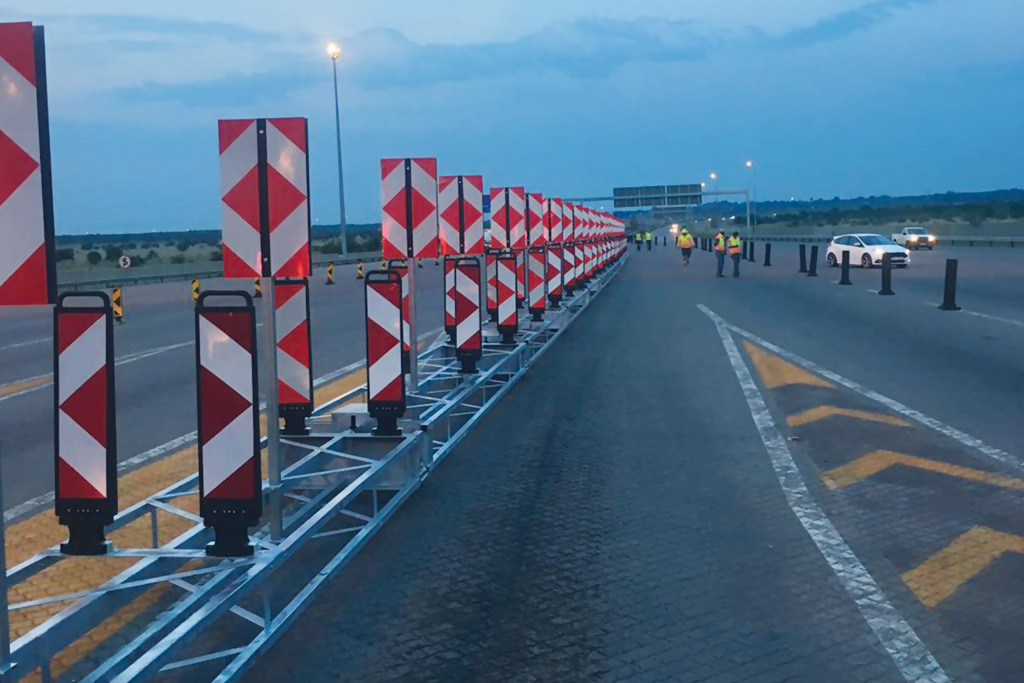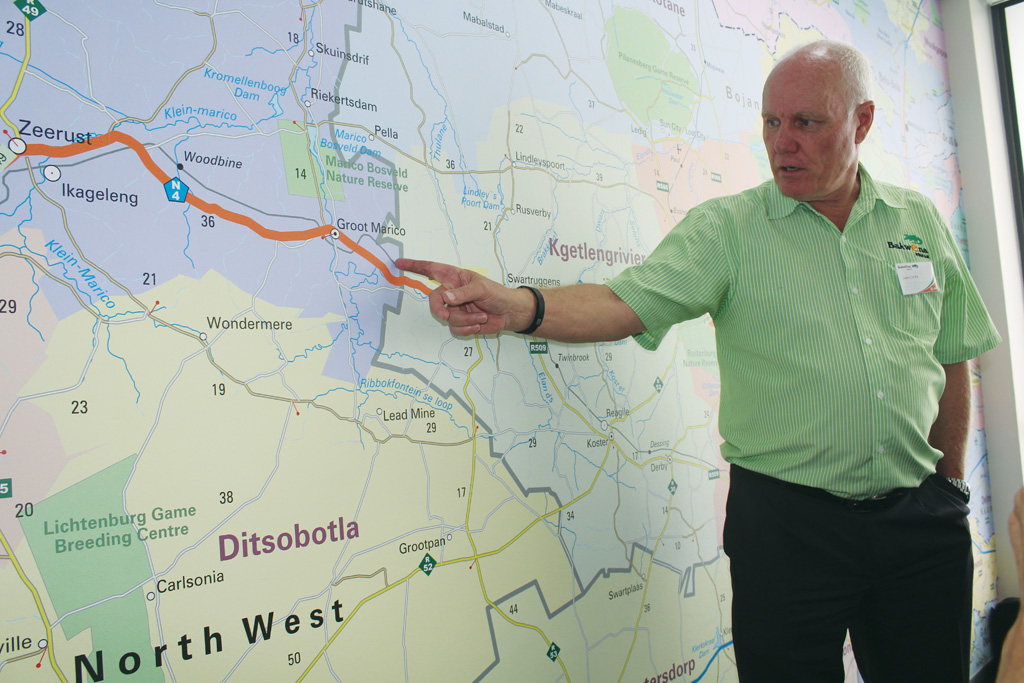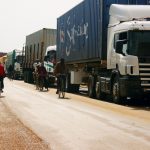A tale of tolls

At the Bakwena N1N4 toll concession, a mere 18 staff members are responsible for 385 km of the N1 north and N4 west highways. GAVIN MYERS joins the team to find out more.
We’re standing about watching the roadside construction at the Swartruggens toll plaza on the N4 (the last Bakwena toll plaza en route to the Skilpadhek border post with Botswana).
There isn’t much else going on with only a few vehicles coming past, so we pop in at one of the toll booths of the busier Doornpoort plaza on the N4, just north of Pretoria, to see how the toll collector is getting on with her morning.
She’s doing just fine, so we turn back the clock a couple of hours and watch the utterly fascinating 300-m long, R2-million automated pivot barriers shift across to open more lanes for the heavier early morning traffic flow heading into town. All of this takes only a few mouse clicks and keyboard jabs from the operations room at the Bakwena head office in Centurion…
The network of 140 HD cameras spread along the route link up with the operations room by an ultra-high-speed fibre connection. Each camera can zoom, tilt and pan 360°, while 60 to 90 days of footage is stored. That’s a lot of data, but this small company works with big numbers.
For example, explains commercial manager Liam Clarke, when Bakwena began operations in August 2001, the initial investment was R3 billion. In 2009, the need for additional capacity was identified and so another R1 billion was invested.
The concession is tied into 23 back-to-back contracts to help it “keep things moving”, and has a continual list of projects along the 385-km route.

Three construction and maintenance projects will start in 2018, which will total upwards of R750 million (as well as the continuation of the aforementioned R273-million construction between Swartruggens and Groot Marico, which began in July and will end in February 2019).
Bakwena recently completed an upgrade of its toll plazas, which added a total of 14 more lanes, so that it can keep ahead of rising traffic volumes. The general throughput at a manual toll booth is 250 to 350 vehicles per hour, which leads Clarke to discuss the merits of e-tolling – and more big numbers…
“E-tolling has a significant impact on our efficiency; we can process 750 to 1 100 vehicles an hour through the e-tag express lane. If every car had an e-tag we could have saved the expense of adding the extra lanes,” he says.
While Bakwena had offered travellers on its route the option of e-tags long before Sanral’s Gauteng open-road tolling came to light, the revenue stream from the Sanral e-tags on the N1N4 only amounts to around 30 percent.
Bakwena processes 1,7-million e-tag transactions a month and physically verifies 12 000 of the approximately 200 000 daily transactions. A complete update of the e-tag database from Sanral takes place every two minutes.
“We’re also investigating other technology to help vehicle throughput, such as tap-and-go card machines,” Clarke says, adding that payment security is a top priority … Bakwena is the only merchant in the country that is level-1 Payment Card Industry Data Security Standard (PCI DSS) accredited.
As Bakwena enters the 17th year of its 30-year concession, one cannot but be impressed with what such a small team has managed to do with such a major transport route into Gauteng … and we haven’t even hit the road yet… Happily, early in 2018 we’ll be doing just that!
Published by
Focus on Transport
focusmagsa




